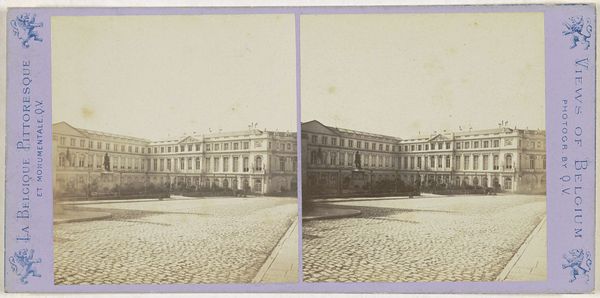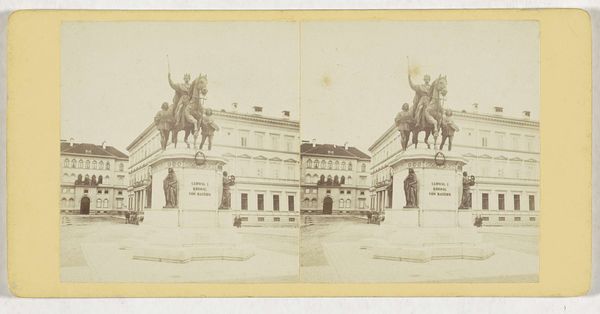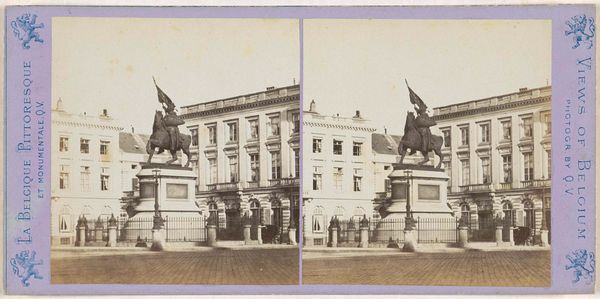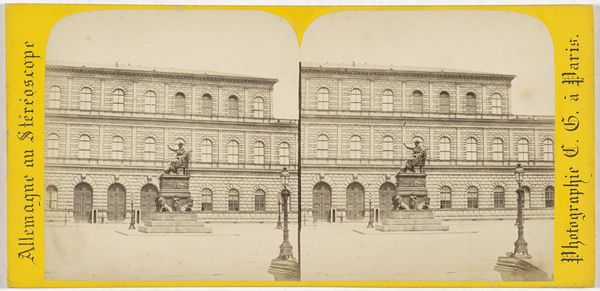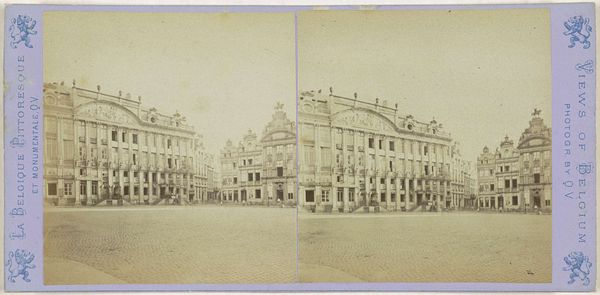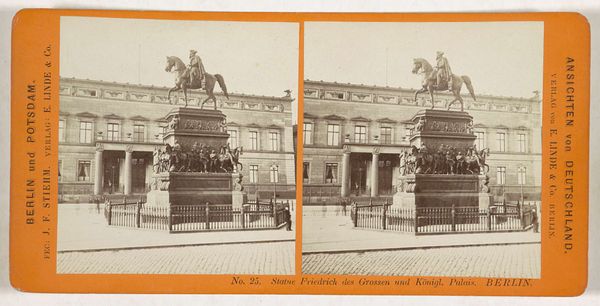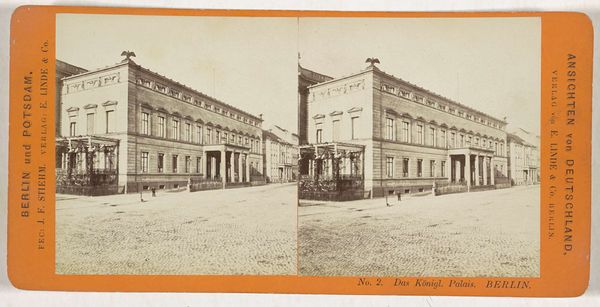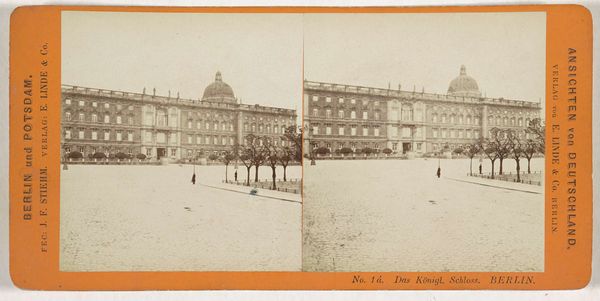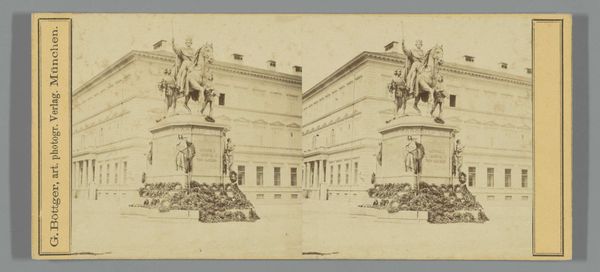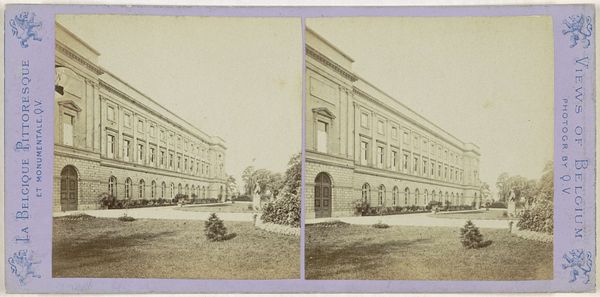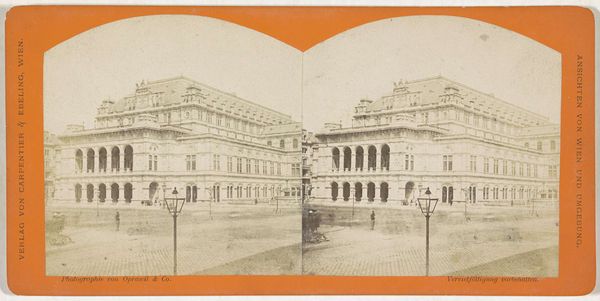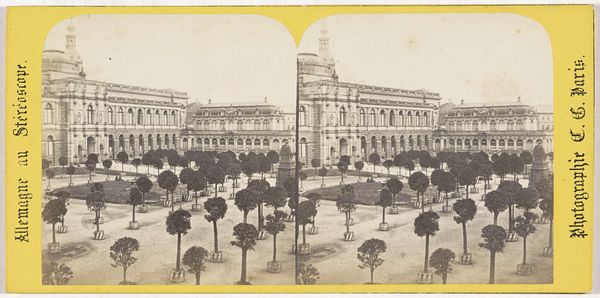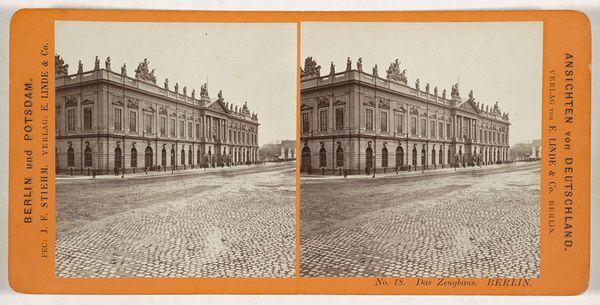
Standbeeld van Maximiliaan I Jozef van Beieren voor de Residentie van München 1868 - 1890
0:00
0:00
photography, sculpture
#
portrait
#
statue
#
photography
#
coloured pencil
#
sculpture
#
cityscape
Dimensions: height 87 mm, width 177 mm
Copyright: Rijks Museum: Open Domain
Curator: Let's turn our attention to this captivating photograph dating between 1868 and 1890, attributed to Johann Friedrich Stiehm. It depicts the statue of Maximilian I Joseph of Bavaria in front of the Munich Residenz. Editor: My initial impression is one of formality, almost austere. The symmetrical composition and muted tones give it a very rigid feel, and the repetitive architectural patterns add to this. It makes you contemplate not the king but also the people who toiled to build and cast. Curator: Precisely. The photographic process itself interests me. Notice the meticulous staging and the calculated angle. It speaks volumes about the formal values that shaped representation during that era. The figure is captured from below, asserting authority and importance through formal visual cues. Editor: Absolutely, and one wonders about the accessibility of art for those laborers. This monument, likely bronze, required mining, smelting, and skillful craftsmanship. What were their conditions of labor like when they worked in the shadow of monuments like these, supposedly erected in their name as a public good? Curator: That tension between aesthetic achievement and material circumstances is certainly a key consideration. I see here the artist grappling with portraying a civic symbol, caught between celebrating power and conveying an idealized notion of leadership through careful geometric form. Editor: I agree that there's tension here and the image raises some hard questions for modern-day consumers, especially regarding access, labor practices, and societal values in place for centuries! This highlights a disparity between a very small privileged upper class, which includes monarchs and wealthy people and the huge populations who did all the building for pennies. The work is meant to stand for power while ignoring real inequality in materials and the social framework that surrounds that power! Curator: It has been rewarding to probe both the image's formal composition and how that interplay has impacted our reading of history. Editor: I concur; recognizing that art has an intrinsic nature is rewarding, but its association with labor and materiality gives the viewer a unique insight into the nature of how meaning is consumed over time.
Comments
No comments
Be the first to comment and join the conversation on the ultimate creative platform.
